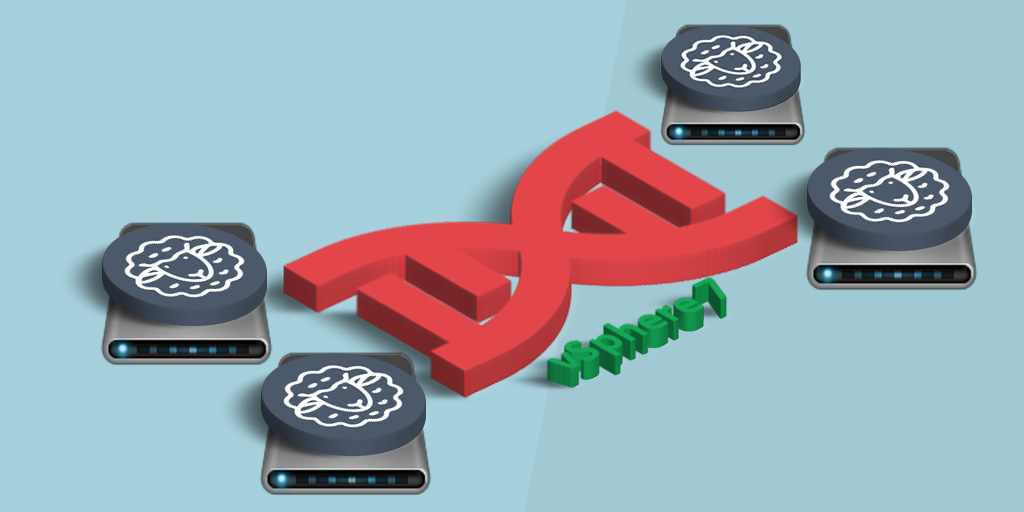- Course Introduction
- Introductions and course logistics
- Review course objectives
- Introduction to vSphere Networking
- Describe VMware vSphere® networking components
- Describe vSphere standard switches
- Describe vSphere distributed switches
- Introduction to NSX
- Describe the benefits of NSX
- Identify NSX key use cases
- NSX Architecture
- Describe the NSX architecture
- Describe the cloud management, management, control, and data planes of NSX
- Identify the component interactions
- Describe the VMware NSX® Controller™ cluster and its functions
- Explain the NSX Controller workload distribution
- NSX Infrastructure Preparation
- Explain the steps required for an NSX installation
- Describe what is involved in planning an NSX deployment
- Describe the NSX Controller cluster and deployment
- Describe NSX Controller cluster high availability and load distribution
- Explain how to deploy and configure the NSX Controller cluster
- Explain the workflow involved in host preparation
- NSX Logical Switch Networks
- Explain transport zones, VXLANs, and VXLAN tunnel end points (VTEPs)
- Describe the procedure for preparing the infrastructure for virtual networking
- Describe the configuration of vSphere distributed switches for VXLAN
- Identify the components involved in NSX logical switching
- Define VLANs for VXLAN
- NSX Logical Routing Explain the east-west and north-south routing concepts
- Define the NSX distributed logical router
- Explain the logical router, interfaces, and interface addresses
- Describe the management and control plane interaction
- Describe logical router deployment models and two-tier routing for east-west traffic
- Explain the common topologies of an NSX Edge services gateway
- Advanced NSX Logical Routing
- Describe how routers connect remote networks
- Explain route redistribution methods
- Describe less-than-or-equal (LE) and greater-than-or-equal (GE) configurations
- Describe routing event notification enhancements
- Configure equal-cost multipath (ECMP) routing
- Describe high availability for NSX Edge service gateways
- NSX L2 Bridging
- Explain L2 bridging use cases
- Describe software and hardware L2 bridging between VXLAN and VLANs
- Discuss L2 bridging packet flows
- NSX Edge Services
- Describe the NSX Edge Services
- Explain how Network Address Translation (NAT) works
- Explain NAT64
- Explain the function of load balancing
- Explain one-armed and inline load-balancing architectures
- Explain the DHCP and DNS services for NSX Edge
- NSX Edge VPN Services
- Describe the NSX Edge VPN services
- Describe the VPN use cases
- Configure a L2 VPN on an NSX Edge instance
- Configure an NSX Edge instance for IPsec VPN services
- Explain NSX Edge SSL VPN-Plus services
- Configure NSX Edge SSL VPN-Plus server settings
- NSX Security Services
- Describe the policy enforcement of the distributed firewall
- Describe virtualization context-awareness
- Explain custom network and security containers
- Describe the architecture of an NSX Edge firewall
- Explain DHCP snooping
- Explain ARP snooping
- NSX Advanced Security Services
- Describe NSX SpoofGuard
- Identify how tags enable dynamic security service chains
- Explain Service Composer groups, policies, and tags
- Describe the Identity Firewall architecture
- Explain Application Rule Manager
- Explain how to create a monitoring session
- NSX Introspection Services
- Describe the types of introspection services
- Describe the installation and configuration of Guest and Network Introspection
- Summarize Guest and Network Introspection alarms, events, and audit messages
- Cross-vCenter NSX
- Describe cross-vCenter features and use cases
- Identify VMware NSX® Manager™ roles and NSX Controller cluster placement
- Deploy universal logical networks
- Explain the design considerations for cross-vCenter NSX
VMware NSX: Install, Configure, Manage [V6.4] – On Demand Seminar
Umfassendes Intensivtraining zu Installation, Konfiguration und Management
-
- Dieser fünftägige, umfassende und intensive Schulungskurs stellt VMware NSX® als Teil des Software-definierten Datenzentrums vor. Du lernst, wie du logisches Switching in NSX verwendest, um deine Switching-Umgebung zu virtualisieren. Der Kurs geht auch auf das logische Routing ein, mit dem du dynamisch zwischen verschiedenen virtuellen Umgebungen routen kannst. Außerdem lernst du, wie du Gateway-Dienste, Firewall-Konfigurationen und Sicherheitsdienste nutzt, um deine NSX-Umgebung zu sichern und zu optimieren.
- Der Zugang zu einer Software-definierten Rechenzentrumsumgebung wird durch praktische Übungen ermöglicht, um die im Kurs vorgestellten Fähigkeiten und Konzepte zu festigen.
Inhalte VMware NSX 6.4 Seminar
Zielgruppe VMware NSX 6.4 Seminar
Erfahrene System- oder Netzwerkadministratoren
Voraussetzungen VMware NSX 6.4 Seminar
- Verständnis für Enterprise Switching und Routing
- Kenntnisse über TCP/IP-Dienste
- Erfahrung mit Firewalls und Firewall-Regelsätzen
- Verständnis der Konzepte, die im Kurs „VMware Data Center Virtualization Fundamentals“ vorgestellt werden
- Verständnis der Konzepte, die im Kurs „VMware Introduction to Network Virtualization with NSX“ vorgestellt werden



![VMware NSX-T Data Center: Install, Configure, Manage [V3.x]](https://incas-training.de/wp-content/uploads/2021/07/vmware-3-536x268.jpg)





